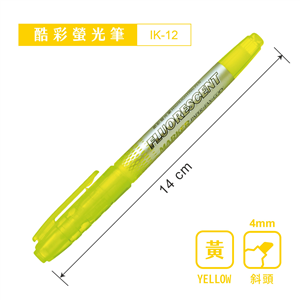 收藏
收藏

 二手徵求有驚喜
二手徵求有驚喜
定價:NT$ 200
優惠價: 95 折, NT$ 190
限量商品已售完




臺灣港埠大多座落於沖積土層或海埔新生地,該類土層質地鬆軟,在強烈地震侵襲下,不僅結構設施會因強波震盪而受損,鬆軟土層也可能發生液化現象,導致設置其上的結構物喪失支撐而受損,或側向液化土壓增大而傾移。臺灣雖未曾遭遇如日本阪神地震神戶港一般港域全面性的損壞,但局部性的災害也嘗發生過,相關議題值得探討。而過去港灣地震災害之處置,主要係於災情發生後,才進行事後調查、災害原因診斷與災後復建,因而極易延誤處理作業,影響港口正常營運;更由於缺少災害發生時之監測資料,對災害原因之研判較為困難,因此可能造成災後不當之復建方式。近年來由於井下地震儀與通訊技術之發展,可針對地震災害潛能較高之港灣地區,建立地震及液化之即時監測系統,於地震災害發生前,藉著中小型地震之監測資料,經由地震之頻譜分析與液化潛能評估,可增加對港區震波反應特性之瞭解,並且以數值分析進行地震災況模擬,可瞭解港灣設施可能之震害狀況。 因此,本計畫依上述災況及可能需求,分別進行(1)港灣地區地震即時監測及地震模擬之研究。(2)探討西南沿海重要港區在強烈地震作用下,可能之災況模擬。(3)探討碼頭在強烈地震作用下,可能之破壞機制,及其可能之災況模擬。(4)建構棧橋式碼頭現地動態監測系統。(5)港區地震及地層下陷監測資料庫建置等研究工作。這些成果可作為災前預防、災時應變及災後重建計畫之參考。
Most harbors in Taiwan are located on alluvium strata and reclaimed lands whose soil characteristics are generally loose, soft and under-consolidated. Under the occurrence of a strong earthquake, not only will the structure equipment be damaged by the strong shake waves, but the soft strata also will encounter liquefaction. Seismic failures are common in harbors around the world. Extensive damage to the port area was reported in Kobe Port after the Kobe earthquake 1996. In Taiwan, local failures had occurred in port areas. Those issues are worth discussing. Restricted by little experience and less understanding of the failure mechanism, current response plans for disaster earthquakes in port areas focus on after-shock reconnaissance in identifying the sources of failures and restoration of facilities. The passive strategy could not reduce the remediation process and delay is inevitable. Furthermore, after-shock investigations are difficult and less reliable due to a lack of real-time monitoring of the earthquake, resulting in ineffective repairs. Reliable, long-waiting, real-time measurements of earthquakes and liquefaction responses in harbor areas are feasible due to developments of underground instrumentations. Recently, surface vibration sources are implemented to simulate earthquake and liquefaction responses. The data from in situ measurements of small shaking and surface vibration sources could improve the accuracy of local seismic analyses. Implementing the in situ data with state-of-the-art numerical simulations, reliable scenario simulations of various seismic hazardous in port and coast area can be performed in order to understand the seismic damage to harbor facilities. The undergoing project will perform the following in selected harbor areas: 1) dynamic real-time monitoring of earthquakes and artificial vibration sources, 2) liquefaction potential evaluation of western coastal areas and important harbors using discriminant methods, 3) possible seismic broken mechanisms and scenario simulations of wharf structures subjected to liquefaction, 4) establishment of in-situ trestle wharf dynamic monitoring system and 5) database establishment of earthquake and soil subsidence monitoring in harbor areas. Those are beneficial to both the design of the monitoring system for port facilities and development of remediation and response plans for a specific harbor.
退換貨說明:
會員均享有10天的商品猶豫期(含例假日)。若您欲辦理退換貨,請於取得該商品10日內寄回。
辦理退換貨時,請保持商品全新狀態與完整包裝(商品本身、贈品、贈票、附件、內外包裝、保證書、隨貨文件等)一併寄回。若退回商品無法回復原狀者,可能影響退換貨權利之行使或須負擔部分費用。
訂購本商品前請務必詳閱退換貨原則。 收藏
收藏

 二手徵求有驚喜
二手徵求有驚喜
優惠價: 95 折, NT$ 190 NT$ 200
限量商品已售完
臺灣港埠大多座落於沖積土層或海埔新生地,該類土層質地鬆軟,在強烈地震侵襲下,不僅結構設施會因強波震盪而受損,鬆軟土層也可能發生液化現象,導致設置其上的結構物喪失支撐而受損,或側向液化土壓增大而傾移。臺灣雖未曾遭遇如日本阪神地震神戶港一般港域全面性的損壞,但局部性的災害也嘗發生過,相關議題值得探討。而過去港灣地震災害之處置,主要係於災情發生後,才進行事後調查、災害原因診斷與災後復建,因而極易延誤處理作業,影響港口正常營運;更由於缺少災害發生時之監測資料,對災害原因之研判較為困難,因此可能造成災後不當之復建方式。近年來由於井下地震儀與通訊技術之發展,可針對地震災害潛能較高之港灣地區,建立地震及液化之即時監測系統,於地震災害發生前,藉著中小型地震之監測資料,經由地震之頻譜分析與液化潛能評估,可增加對港區震波反應特性之瞭解,並且以數值分析進行地震災況模擬,可瞭解港灣設施可能之震害狀況。 因此,本計畫依上述災況及可能需求,分別進行(1)港灣地區地震即時監測及地震模擬之研究。(2)探討西南沿海重要港區在強烈地震作用下,可能之災況模擬。(3)探討碼頭在強烈地震作用下,可能之破壞機制,及其可能之災況模擬。(4)建構棧橋式碼頭現地動態監測系統。(5)港區地震及地層下陷監測資料庫建置等研究工作。這些成果可作為災前預防、災時應變及災後重建計畫之參考。
Most harbors in Taiwan are located on alluvium strata and reclaimed lands whose soil characteristics are generally loose, soft and under-consolidated. Under the occurrence of a strong earthquake, not only will the structure equipment be damaged by the strong shake waves, but the soft strata also will encounter liquefaction. Seismic failures are common in harbors around the world. Extensive damage to the port area was reported in Kobe Port after the Kobe earthquake 1996. In Taiwan, local failures had occurred in port areas. Those issues are worth discussing. Restricted by little experience and less understanding of the failure mechanism, current response plans for disaster earthquakes in port areas focus on after-shock reconnaissance in identifying the sources of failures and restoration of facilities. The passive strategy could not reduce the remediation process and delay is inevitable. Furthermore, after-shock investigations are difficult and less reliable due to a lack of real-time monitoring of the earthquake, resulting in ineffective repairs. Reliable, long-waiting, real-time measurements of earthquakes and liquefaction responses in harbor areas are feasible due to developments of underground instrumentations. Recently, surface vibration sources are implemented to simulate earthquake and liquefaction responses. The data from in situ measurements of small shaking and surface vibration sources could improve the accuracy of local seismic analyses. Implementing the in situ data with state-of-the-art numerical simulations, reliable scenario simulations of various seismic hazardous in port and coast area can be performed in order to understand the seismic damage to harbor facilities. The undergoing project will perform the following in selected harbor areas: 1) dynamic real-time monitoring of earthquakes and artificial vibration sources, 2) liquefaction potential evaluation of western coastal areas and important harbors using discriminant methods, 3) possible seismic broken mechanisms and scenario simulations of wharf structures subjected to liquefaction, 4) establishment of in-situ trestle wharf dynamic monitoring system and 5) database establishment of earthquake and soil subsidence monitoring in harbor areas. Those are beneficial to both the design of the monitoring system for port facilities and development of remediation and response plans for a specific harbor.
退換貨說明:
會員均享有10天的商品猶豫期(含例假日)。若您欲辦理退換貨,請於取得該商品10日內寄回。
辦理退換貨時,請保持商品全新狀態與完整包裝(商品本身、贈品、贈票、附件、內外包裝、保證書、隨貨文件等)一併寄回。若退回商品無法回復原狀者,可能影響退換貨權利之行使或須負擔部分費用。
訂購本商品前請務必詳閱退換貨原則。
※ 二手徵求後,有綁定line通知的讀者,
該二手書結帳減5元。(減5元可累加)
請在手機上開啟Line應用程式,點選搜尋欄位旁的掃描圖示
即可掃描此ORcode
|
||||||||||||||||||
|
||||||||||||||||||
|
||||||||||||||||||













